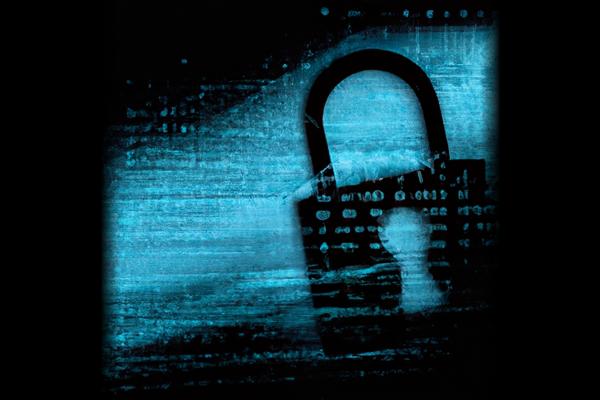A recent data leak [3], known as the “Mother of all Breaches” (MOAB) [2] [4] [6] [7] [8], has exposed a staggering 26 billion personal records [3], making it the largest-ever breach discovered [3] [7]. This breach compromised sensitive information from platforms such as Twitter, Dropbox [3], LinkedIn [1] [2] [3] [4] [5] [6] [7] [8], Tencent’s QQ [2] [3] [4], Weibo [1] [2] [3] [4] [6] [7] [8], MySpace [1] [2] [3] [4] [6] [7], and government organizations [2] [3] [7] [8].
Description
The breached data [2] [3] [5] [6] [8], totaling 13 terabytes [4] [5] [6] [8], includes personal information [6], financial details, social media data [6], professional information [6], entertainment and gaming data [6], and government records [6]. It is a compilation of information from various past breaches and hacked databases [6]. The database containing the breached data was found to be exposed on an unsecured web instance and did not require authentication for access. While it is unlikely that any new breaches have been made public in this leak [1], there is a concern that the leaked data could be used for credential stuffing attacks [1]. The true identity of the perpetrator behind MOAB remains unknown [6], but the motive for the breach is believed to be malicious [6]. The impact of this breach extends beyond the sheer volume of records exposed [6], as the data can be used for identity theft [5] [6] [8], phishing attacks [6] [8], cyber assaults [6], and unauthorized access [4] [5] [6] [7] [8].
In light of this breach, experts advise users to practice good cyber-hygiene [1], including changing passwords and enabling two-factor authentication [1]. Additionally, breach notification site HaveIBeenPwned recently published a significant volume of new data, which includes 71 million unique email addresses not previously listed in their database [1]. The MOAB dataset, equivalent to 12 terabytes of information [5] [8], contains user data from platforms such as LinkedIn [5] [8], Twitter [1] [2] [3] [4] [5] [6] [7] [8], and Adobe [5] [6] [7]. It is believed to have been compiled by a cybercriminal gang or data broker [5]. The aggregated data poses a significant threat [5] [8], as it can be used for identity theft [5] [6] [8], phishing schemes [4] [5] [7] [8], cyberattacks [2] [4] [5] [7] [8], and unauthorized access to personal accounts [4] [5] [7] [8]. Even the old data from previous breaches can be used for credential stuffing attacks. Businesses and individuals affected by the breach are advised to change their passwords [5], be vigilant against phishing emails [5], and enable multi-factor authentication [1] [5] [8].
The source of the breach is difficult to determine [5], but it is likely the work of criminal groups or independent cyberattackers [5]. LinkedIn is currently investigating claims that data from its users was included in the MOAB [5]. The leaked dataset [1] [2] [4] [8], totaling 12 terabytes [4] [5] [8], includes user data from platforms such as LinkedIn [5] [8], Twitter [1] [2] [3] [4] [5] [6] [7] [8], Weibo [1] [2] [3] [4] [6] [7] [8], and Tencent [7] [8]. While most of the data comes from previous breaches [8], it is believed to also contain new data that has not been published before [8]. The owner of the MOAB remains unknown [8], but researchers suspect they may be a malicious actor or data broker [8]. The leaked data poses a significant threat [5] [8], as it can be used for identity theft [5] [6] [8], phishing schemes [4] [5] [7] [8], cyberattacks [2] [4] [5] [7] [8], and unauthorized access to personal accounts [4] [5] [7] [8]. The MOAB contains sensitive information beyond just credentials [8], and it is expected to have a major impact on consumers [8]. There is a high probability of duplicates within the leaked data [8], but the sheer volume of new records suggests that previously unseen information is included [8]. The leak includes records from various government organizations and companies worldwide [8]. The exposure of such a massive amount of data increases the risk of credential-stuffing attacks [8], where malicious actors use stolen credentials to gain unauthorized access to multiple accounts [8]. To protect themselves [6] [8], users are advised to use strong passwords [8], enable two-factor authentication [1] [5] [8], be cautious of phishing attempts [8], and check for password duplicates [8].
Conclusion
The MOAB data breach has significant implications for individuals and businesses alike. The sheer volume of personal records exposed increases the risk of identity theft, phishing attacks [6] [8], and unauthorized access to personal accounts [4] [5] [7] [8]. It is crucial for users to take immediate action to protect themselves by changing passwords, enabling two-factor authentication [1] [5] [8], and being vigilant against phishing attempts. The breach also highlights the need for improved cybersecurity measures and stricter regulations to prevent such large-scale breaches in the future.
References
[1] https://www.infosecurity-magazine.com/news/mother-breaches-unlikely-new-data/
[2] https://news.cloudsek.com/2024/01/mother-of-all-breaches-moab-12-terabytes-of-information-and-26-billion-records-exposed-in-largest-data-leak-in-history/
[3] https://tenintel.com/mother-of-all-data-breaches/
[4] https://securityaffairs.com/157933/breaking-news/largest-data-leak-ever.html
[5] https://techmonitor.ai/technology/cybersecurity/mother-of-all-breaches-data
[6] https://dataconomy.com/2024/01/23/mother-of-all-breaches-moab-26-billion/
[7] https://techaeris.com/2024/01/23/massive-data-breach-exposes-26-billion-records/
[8] https://e-crimebureau.com/mother-of-all-breaches-reveals-26-billion-records-what-we-know-so-far/





